Tony Iommi on Black Sabbath's Vol 4: "Somebody said, ‘You can’t put Laguna Sunrise on the album with all the heavy stuff.’ Why?"
Classic interview: 50 years on from Vol 4, we look back with a guitar pioneer
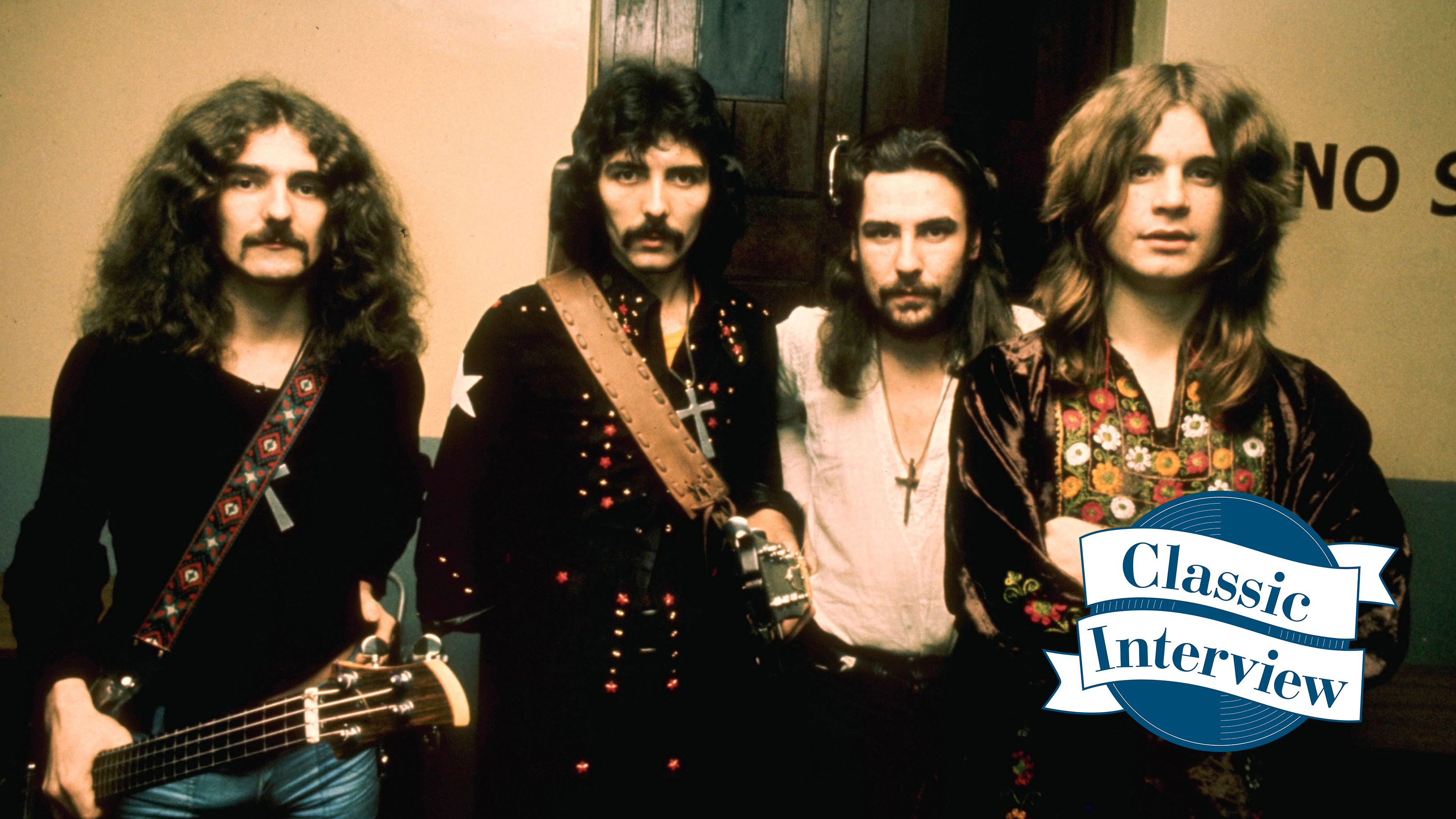
On 4 February 2017, Black Sabbath walked off stage at the Genting Arena in their home city of Birmingham after the last show of their final tour.
That heavy and emotional finale is captured on the DVD, Blu-ray and album, The End. But they didn’t go their separate ways that night. Instead, the band spent another three days together, finishing by going full circle with Tony Iommi, Ozzy Osbourne and Geezer Butler playing together in a room as they had began 49 years previously.
“It was actually my idea to do that,” Tony Iommi tells us as we meet in the grand Rocket Room of London’s Hospital Club.
“I thought it would be nice to play some different tracks that people enjoy and that we’re not playing on stage; let Ozzy sing them at ease as opposed to singing them every night. He wouldn’t be able to do them every night, but as one-offs he can. Purely because some of them are high. It was really nice to be able to do that. And I’m so glad we did do it for another reason: because on the last night we’d have all just disappeared after the show.”
The intimate session at Angelic Studios in Northamptonshire with touring drummer Tommy Clufetos can also be seen on The End and sees the trio blasting through songs such as Wicked World and The Wizard from their seminal, self-titled 1969 debut album.
Ozzy can even be found dusting down his harmonica for the latter as well as the unusual sight of Iommi and Butler on keys for a performance of ballad Changes from 1972’s Vol 4.
“I hadn’t played the piano for years and certainly Geezer hadn’t,” laughs Tony. He said, ‘I don’t wanna do it, I can’t remember it!’ But it was alright!”
Want all the hottest music and gear news, reviews, deals, features and more, direct to your inbox? Sign up here.
With The End released on 17 November and the band’s eight-album boxset The Ten Year War rounding up their legacy with Ozzy, there are no keys in sight when we meet. We’re here to talk guitar wisdom with Tony…
Changing Laneys
How Iommi went back to his roots for his final tour rig
“I had a totally different rig altogether for the last tour. I went to Laney and asked them if they would build a better (more reliable) version of the original amps I had years ago in the early days. They thought about it but they had only made a limited amount because they were expensive.
Laney put a lot of effort into it to build the amps how I wanted. Which was great
“I didn’t realise it was going to be as involved as it was. They had a group of people to build these amps but they’d never seen [the originals], they were too young. So they had to be shown how to build each part. It was a lot more than I thought. They put a lot of effort into it to build them how I wanted. Which was great.
“They built me 10. I didn’t use all 10, of course. Pete Cornish built me a new pedalboard to work with these amps because the last system I had was another Iommi version of an amp. The pedalboard had to be different to drive those amps because I drove two different amps at the same time. I’d switch for solos. For this one it was different, it was straight on like it used to be. No fiddling around... I didn’t want all these graphic [EQs] here and there. I just wanted to plug in and play.”
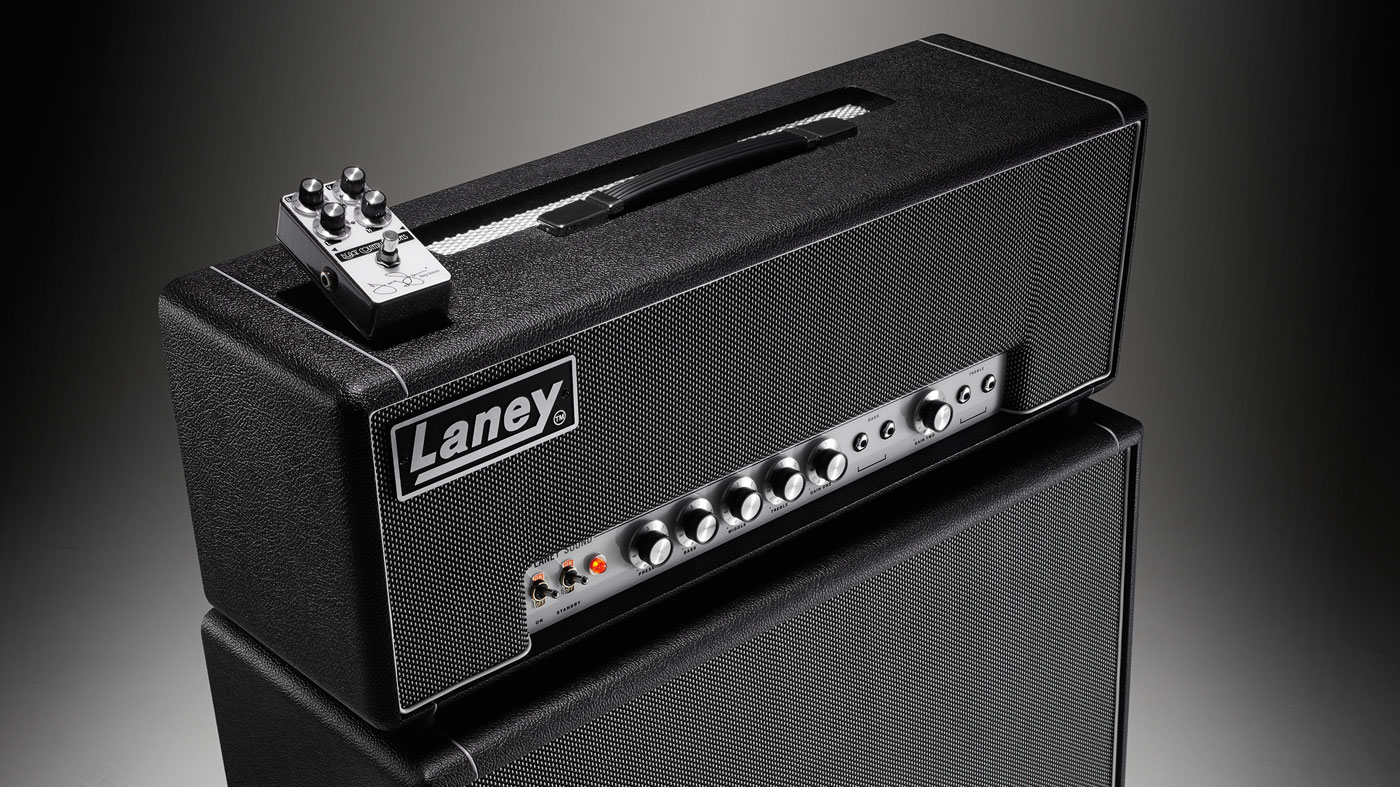
Tone’s tone
So what exactly does the godfather of heavy look for in his sound?
“It has to be beefy. I try and make it half and half because it’s not the greatest sound to play solos with but it’s a good sound for chords and riffs. So I try to make the best of both worlds and tune into a sound that will cover them both. Ideally, I always want a bit more distortion on the solos, or a bit more raw, I should say. But we went with these amps; straight on. And it worked. I liked them. And we didn’t use loads of effects, I only used the wah-wah and a chorus and delay.”
Rick-rolling
The right tone is about more than just old gear
“Analogue is a lot warmer sound-wise. And they’ve tried to do it with the digital stuff and even now they can do it in analogue and convert it to digital. But there are pros and cons for both. The thing with analogue was if you wanted to cut a bit out you’d have to splice the tape and then put bits in. Now you just have to press a couple of buttons.
“With our last album [2013’s 13] Rick Rubin wanted it to sound like the early days and he said, ‘Can you get any of your original amps?’ It was 50 years ago - where are we going to store amps for 50 years? We arrive in the studio and they’ve got a rack full of amps in there and I said to the engineer, ‘What’s all this?’
“He said, ‘Rick ordered them.’ ‘Why?’ All these old vintage Marshalls and about three Laney Klipp amps, which I had never used but he assumed I had. So I got in there and said, ‘I don’t need these.’ But he said Rick’s ordered them, so at least give them a try. I tried them and I didn’t like them. I said to Rick, ‘Just because they’re vintage amps, it doesn’t mean they sound good.’
“So we had this little thing about what we should sound like. He even phoned this bloke up who he said knew how to get my sound. I said: ‘I’m the one who got the sound. Why were you calling someone else about how to get my sound?’ In the end I used my own amp that I designed [TI 100]. Not the new ones - I wish I’d had those then.”
Never say die
This guy was coming along from a record company and thought we were really crap
Sabbath believed in their music when nobody else did
“I think we’ve always had to deal with that. Ever since we started, the first day we had to deal with it. The same with producers. I remember when we first came to London, we played at the Speakeasy Club and we’d never played anything like that before. This guy was coming along from a record company and thought we were really crap. We never really appealed to anybody. So we’d plod on until we found the right thing and somebody would like it.
We knew nothing about recording so all we did was just walk in and play. The first album was like doing a gig for us
“Eventually, it clicked and Phonogram got [producer] Rodger Bain involved, who was very new to them and it was like his test project I think. We knew nothing about recording so all we did was just walk in and play. The first album was like doing a gig for us. Literally, it took that long. We didn’t have weeks to work on it - it was a case of in and out.
“So we’ve always had to push but it makes you strong, it makes you believe in what you do. It makes you work harder to achieve whatever it is you’re trying to. You have this drive that pushes you on to do it.”
Hanks a lot
We might have Marvin and the Shads to thank for the evolution of heavy music!
Bill and myself, when we got together we were playing Shadows songs in the early band we were in
“The Shadows were the only band that really appealed to me [in the early '60s]. There was rock ’n’ roll but I liked the idea of an instrumental band and they had a real sort of demonic sound in some ways - Frightened City and stuff like that had an eerie feeling to it. I really liked what they were doing and they had a nice guitar sound for what they did.
“So I really tried to get that and I did to a point. Bill and myself, when we got together we were playing Shadows songs in the early band we were in, with Cliff Richard stuff and rock ’n’ roll. We wanted this more raw, basic sound, so I got into playing blues and jazz. And from that it went into what we are playing now.
“I never ever classed us as heavy metal in the early days. It’s just that I gave up in the end. Everyone said, ‘You’re heavy metal.’ ‘Okay, we’re heavy metal, call us what you want.’ It was always heavy rock to me.”
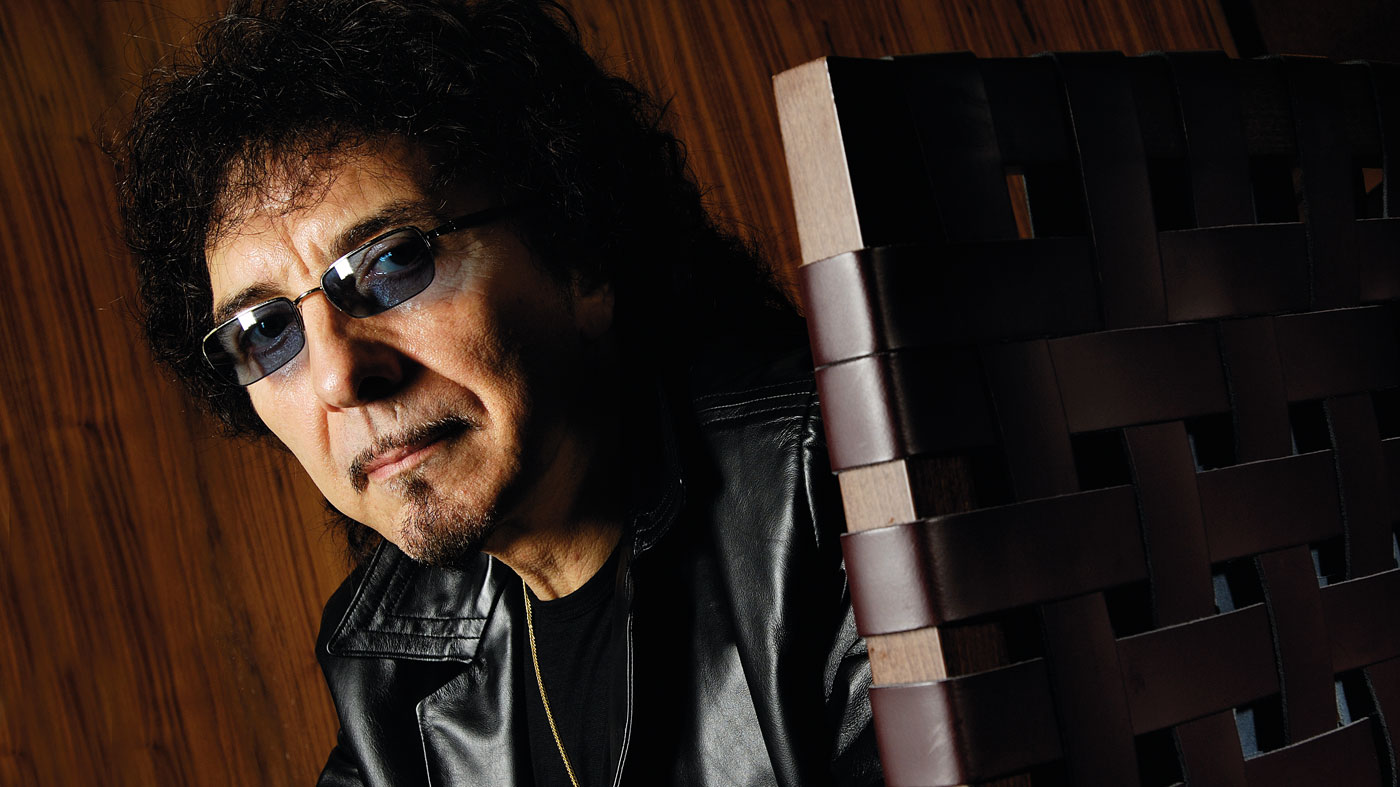
Chemistry test
None of us were brilliant musicians but as a band it worked.
Successful bands are a team
“Geezer is irreplaceable... very important, because he would follow me and know what I was going to play. I never had any doubt at all that Geezer would play the right thing. Those kind of players don’t exist so much. I got a bit annoyed, certainly through the 80s period, that it became more about the posse of bands coming out. Having the bass down here and just hitting one note. Not players to me.
“Geezer would come up with a melodic part and he was the ideal bass player for us. I think we brought out the best in each other. Because none of us were brilliant musicians but as a band it worked. We weren’t technically great but we played and we enjoyed what we did. We created a sound, and we created basic riffs that people liked. Well, we liked them anyway!
“I’ve played with other people who have been technical and I learned through the period of being on my own and bringing in drummers and bass players that however good you are, it doesn’t mean to say you can play what we played. And it proved a point because some of these musicians were great players but you’d say, ‘Can you play War Pigs or Black Sabbath?’ and they couldn’t get it. No feel. And the amount of times I’d have drummers come in to play and they’d say, ‘We know all of Sabbath’s stuff’ and they’d play. ‘Stop! It’s nothing like it. The feel’s not there.’ But technically they’re great. That really did open my eyes. It’s simple… but it’s not.”
Harping on
Iommi is known as a riff master, but Sabbath were frequently experimental too
“I did like to experiment a bit and I’ve always been one to try and do something different from what we’d already done. Even from the early days of doing an instrumental when we did Laguna Sunrise [from Vol 4]. Then Supertzsar [from 1975’s Sabotage] was another one.
“At first somebody said, ‘You can’t put Laguna Sunrise on the album with all the heavy stuff.’ Why? And it was the same with Supertzsar. And I’d done it at home. I had a harp and I couldn’t play the harp but I could play a couple of notes on it. So I put this riff down and thought, ‘I’ll try that harp on this.’
We were always experimental all the way through. Right down to sounds, because you had to make your own sounds in those days
“Then I had a mellotron and put the choir [parts] down and it sort of worked. I played it the others and they said, ‘Oh yeah we like that.’ But the thing was we then had to get proper players in. So we had the choir come onboard. We got this harp player from the philharmonic and she asked, ‘Well, what would you like me to play?’ And I said. ‘I’m playing this [mimics rudimentary harp playing]’ I was so embarrassed. So I said, ‘Just play what you think will go with it.’ But it was all experimental.
“We were always experimental all the way through. Right down to sounds, because you had to make your own sounds in those days. You couldn’t buy a keyboard and press a note that came up as a different sound. You had to make them and it took time to do it.”
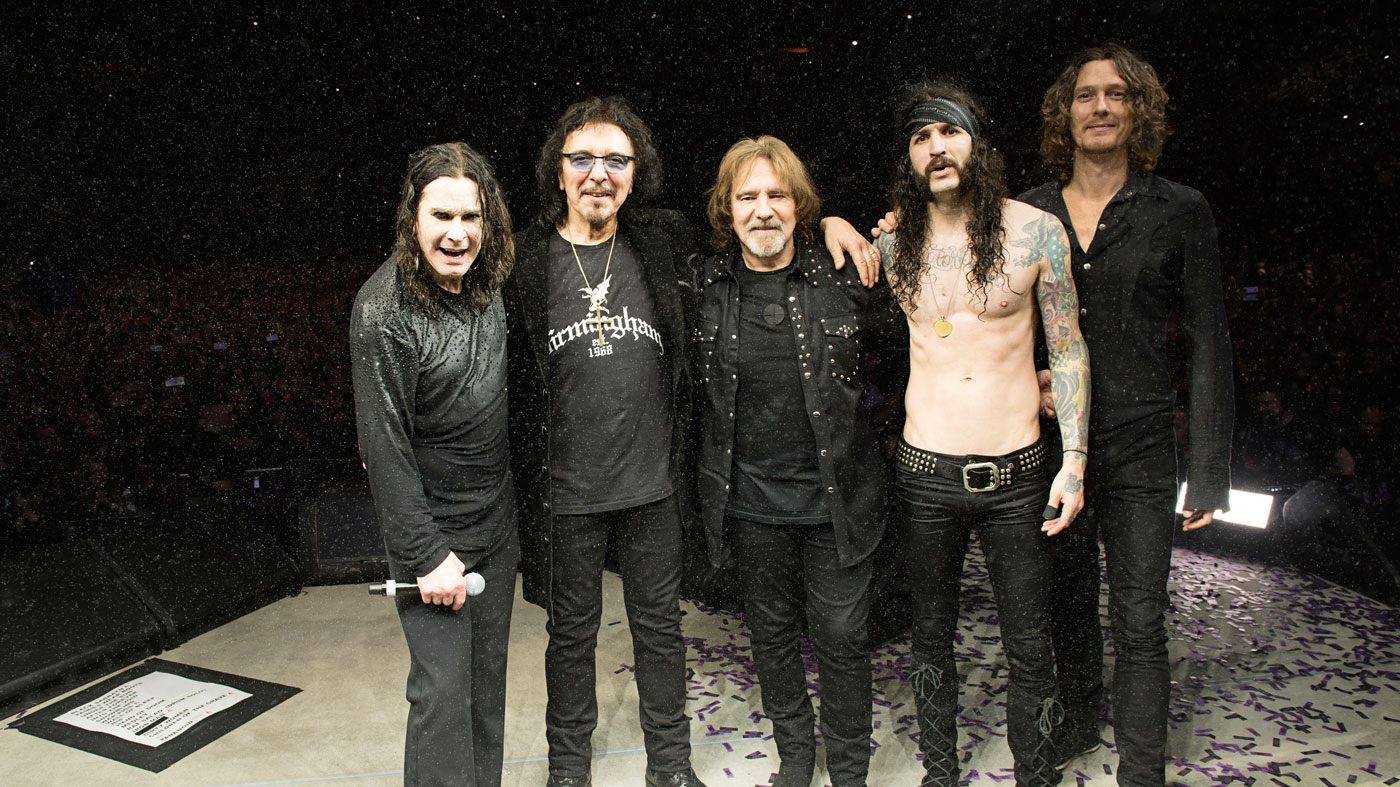
Wheels of confusion
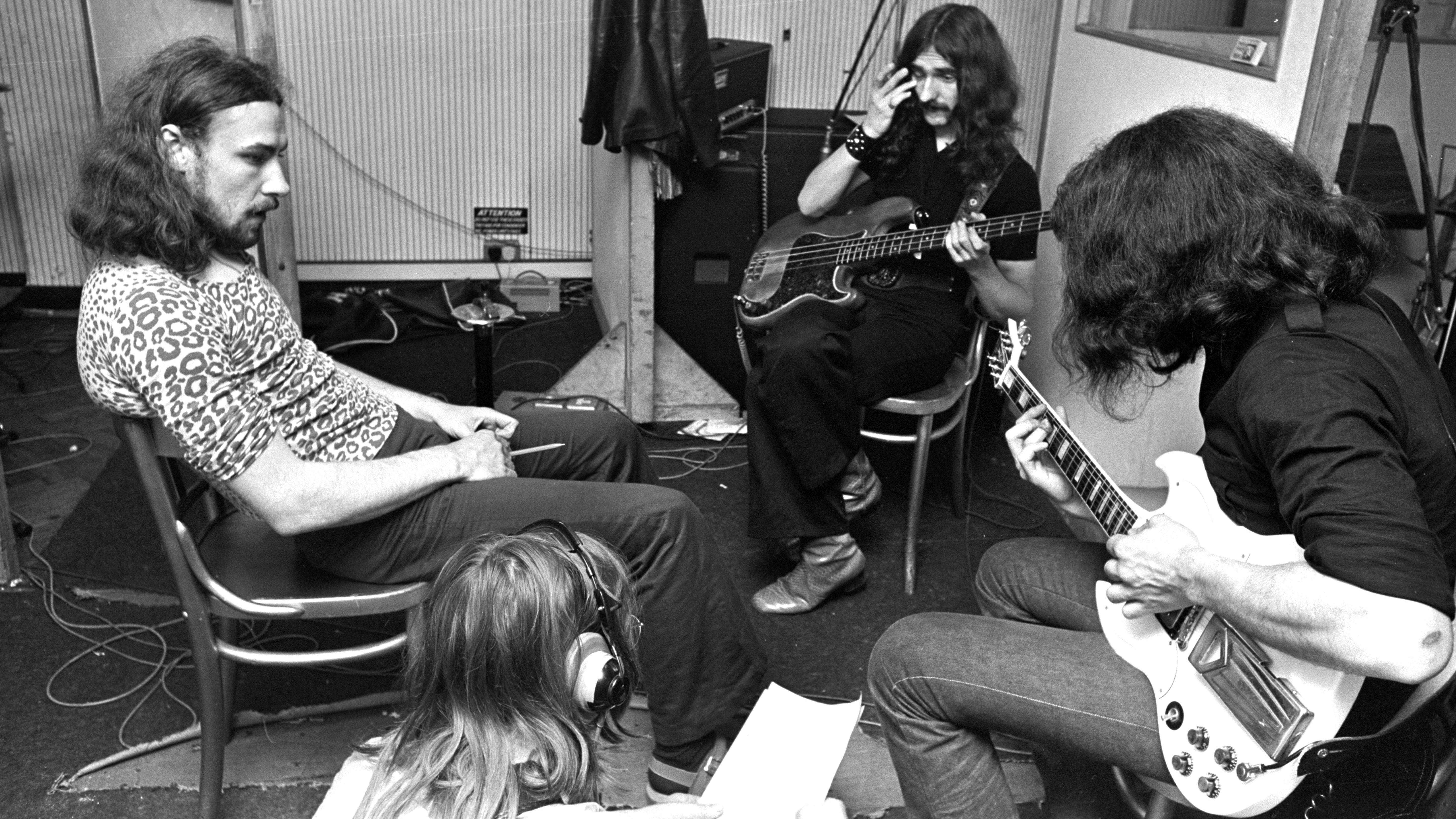
Always record your riffs…
“You had to remember riffs back in the old days. When we did get a tape machine it was a big reel to reel but in the early days we’d have to keep playing the same thing so we’d remember it, because you’d forget. We’d rehearse again the next day and everyone would come in. You’d ask, ‘Does everyone remember it?’ ‘I think so…’ and you’d have to try and drum it into yourself but you might play it slightly differently.
It’s down to feel really
“That’s always the thing if you don’t tape it down, just that little inflection in how you play it can make the song sound different. Just pulling back too much or being too impatient with certain bits, it doesn’t sound the same. You’ve still got to play it the same to get that feel.
“It’s down to feel really. If you hold one note longer than it should be, it makes the tune different. I’ve done it myself many times. I’ve gone in thinking, ‘Well, this is how it is’ and I’ve started playing it but, fortunately, I’ve had a tape of it. Then when I’ve listened back to the tape I thought, ‘Oh blimey I’m not playing that right now’, when I thought I was.”
The thrill of it all
What the guitar means to Iommi today
Being able to play an instrument releases something in you that you wouldn’t normally be able to do
“It’s a way of expressing your inner self. But I don’t sleep with the guitar now, when I did in the early days, mind! It has always meant something very special to me, and it brought out parts of me that you couldn’t bring out normally from within.
“Being able to write music, being able to play an instrument releases something in you that you wouldn’t normally be able to do... that I wouldn’t normally be able to do. And the guitar did that for me. It taught me a lot really.
“When I feel like it, I go and play now. And at the moment I’m really far away from it because there’s so many other things going on, the last thing I want to do is pick up a guitar! But when I do pick it up, I really enjoy it. And I liked it when I could sit with the band and come up with ideas and come up with riffs. Or at home I come up with riffs. Then I’m in my element.”

Rob is the Reviews Editor for GuitarWorld.com and MusicRadar guitars, so spends most of his waking hours (and beyond) thinking about and trying the latest gear while making sure our reviews team is giving you thorough and honest tests of it. He's worked for guitar mags and sites as a writer and editor for nearly 20 years but still winces at the thought of restringing anything with a Floyd Rose.

